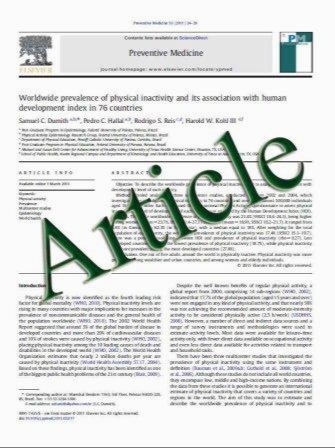Age-dependent frequencies of NPM1 mutations and FLT3-ITD in patients with normal karyotype AML (NK-AML)
- نوع فایل : کتاب
- زبان : انگلیسی
- مؤلف : Friederike Schneider & Eva Hoster & Stephanie Schneider & Annika Dufour & Tobias Benthaus & Purvi M. Kakadia & Stefan K. Bohlander & Jan Braess & Achi
- چاپ و سال / کشور: 2011
Description
Prognosis of AML in elderly patients is poor due to adverse patient characteristics and comorbidities. In addition, disease-associated parameters reveal differences between older and younger patients with AML. Survival in normal karyotype AML (NK-AML) is influenced by different clinical and molecular markers. The aim of this work was to investigate the frequencies of molecular markers in patients with NK-AML with a focus on NPM1 mutations and FLT3-ITD in different age groups. In the present study, we analyzed the frequencies of mutations of NPM1 and FLT3-ITD in a cohort of 1,321 adult patients and 148 children with AML treated within the AMLCG99, the AML98, and AML04 trials and their distribution in different age groups. Additionally, the frequencies of mutations in CEBPA genes, FLT3-TKD, and MLL-PTD were analyzed in the cohort with NK-AML (n=729). Our data show that the presence of mutations of NPM1 (from 60% to 40%) and FLT3-ITD (from 50% to 20%) significantly decreased with age in adult AML. Consequently, the proportion of NPM1−/FLT3-ITD− patients increased with age. The decreasing frequency of NPM1 mutations in elderly patients was paralleled by a reduced complete remission (CR) rate in the elderly of 55% compared to 80% in the younger patients. By contrast, the frequencies of other gene mutations, like FLT3-TKD and MLL-PTD, and mutations in CEBPA were not agedependent. The decreasing frequency of the favorable NPM1 mutations with increasing age may partially explain the worse outcome in the elderly patients. Furthermore, the increasing amount of elderly patients without NPM1 mutations or FLT3-ITD suggests that other molecular and clinical risk factors may influence prognosis in this age group.
Ann Hematol DOI 10.1007/s00277-011-1280-6


